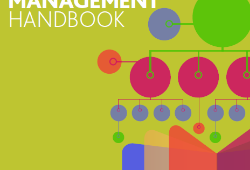S&P Indices has launched the S&P Systematic Global Macro Index (SGMI), which aims to reflect price trends of highly liquid global futures, representing the general level of volatility taken by managers in the global macro and managed futures/Commodity Trading Advisor
(CTA) space. The Index is diversified globally across 37 constituents, falling into the six most widely traded sectors– Commodities, Energy, Fixed Income, Foreign Exchange, Short Term Interest Rates and Equity Indices. Each constituent may be long, short or flat to indicate its trend.
The weighting scheme applies an even risk capital allocation across the index by sector and again to each constituent within each sector so that no single sector or constituent drives the volatility of the index. The even risk capital allocation uses an index target volatility representative of the space, with available leverage of up to 300%, enabling the closest volatility match given a potentially low average correlation across the constituents. The sectors and constituents within the S&P SGMI are rebalanced monthly.
Uniquely, the trend-following model used to determine the position of each constituent is flexible enough to allow a customized time-period for each constituent on a monthly basis, unlike models which are based on fixed time-periods. This means that if a longer-term trend is driving the market, the Index reflects that, but if a shorter-term trend becomes significant the Index picks that up, using an iterative process to test the stability of each trend.
S&P Indices acquired the methodology underlying the S&P SGMI from Thayer Brook Partners LLP. The methodology was developed by Thayer Brook Partners LLP exclusively for S&P Indices.
Jodie Gunzberg, Director of Commodities at S&P Indices said, “This methodical, rules-based Index intends to measure the price trends and perform similar to that of the systematic global-macro space. Historically, this domain has had little correlation to traditional asset classes with relatively small drawdowns as compared with long-only equities or commodities.”
“Issues like high minimums and high fees have made it difficult for many investors to gain access to global macro and managed futures strategies. We envisage that new products based on this index will give investors the ability to invest in a long/short, comprehensive set of the main futures contracts. It’s liquid, tradable and it isn’t just based on commodities, but is well diversified across the six main asset classes in the futures markets.”
Subscribe to our newsletter




